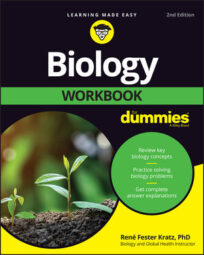Your heart is an impressive little organ. Even though it’s only as big as a clenched adult fist, it pumps 5 liters of blood throughout your body 70 times a minute. Your heart never stops working from the time it starts beating in the embryo until the moment you die. It doesn’t even get an entire second to rest. It beats continually every 0.8 seconds of your life.
The eight-tenths of a second that a heart beats is called the cardiac cycle. During that 0.8-second period, your heart forces blood into your blood vessels (for 0.4 seconds) and then takes a quick rest (for just 0.4 seconds). Here’s what happens in those 0.8 seconds:
Contraction of the left and right atria: This contraction squeezes blood down into the ventricles.
Contraction of the left and right ventricles: This contraction forces blood into the blood vessels that leave the heart.
Resting of the atria and ventricles: The relaxed atria allow the blood within them to drain into the ventricles.
The period of relaxation in the heart muscle is referred to as diastole, and the period of contraction in the heart muscle is called systole. If these terms sound familiar, it’s probably because you’ve heard them used in terms of blood pressure.
In a blood pressure reading, such as the normal value of 120/80 mmHg, 120 is the systolic blood pressure — the pressure at which blood is forced from the ventricles into the arteries when the ventricles contract — and 80 is the diastolic blood pressure — the pressure in the blood vessels when the muscle fibers are relaxed. The abbreviation mmHg stands for millimeters of mercury (Hg is the chemical symbol for mercury).
Answer the following practice questions on paper before continuing.
One type of heart defect is caused by a thickening and hardening of a valve so that the valve has greater resistance to blood flow. If a person’s right AV valve had this defect, what effect would it have on the flow of blood through her heart?
Another type of heart defect results when a valve doesn’t close completely, allowing blood to flow in two directions during a contraction. If a person’s pulmonary semilunar valve had this defect, what effect would it have on his health and why?
The following are the answers to the practice questions.
Blood flow would be restricted and would accumulate in the right atrium. This would increase pressure on the heart during contractions.
During the contraction of the heart, blood wouldn’t flow effectively out of the right ventricle and into the pulmonary artery. This would result in less effective oxygenation of the blood, leading to symptoms like shortness of breath and tiredness (because the person wouldn’t be getting enough oxygen).

